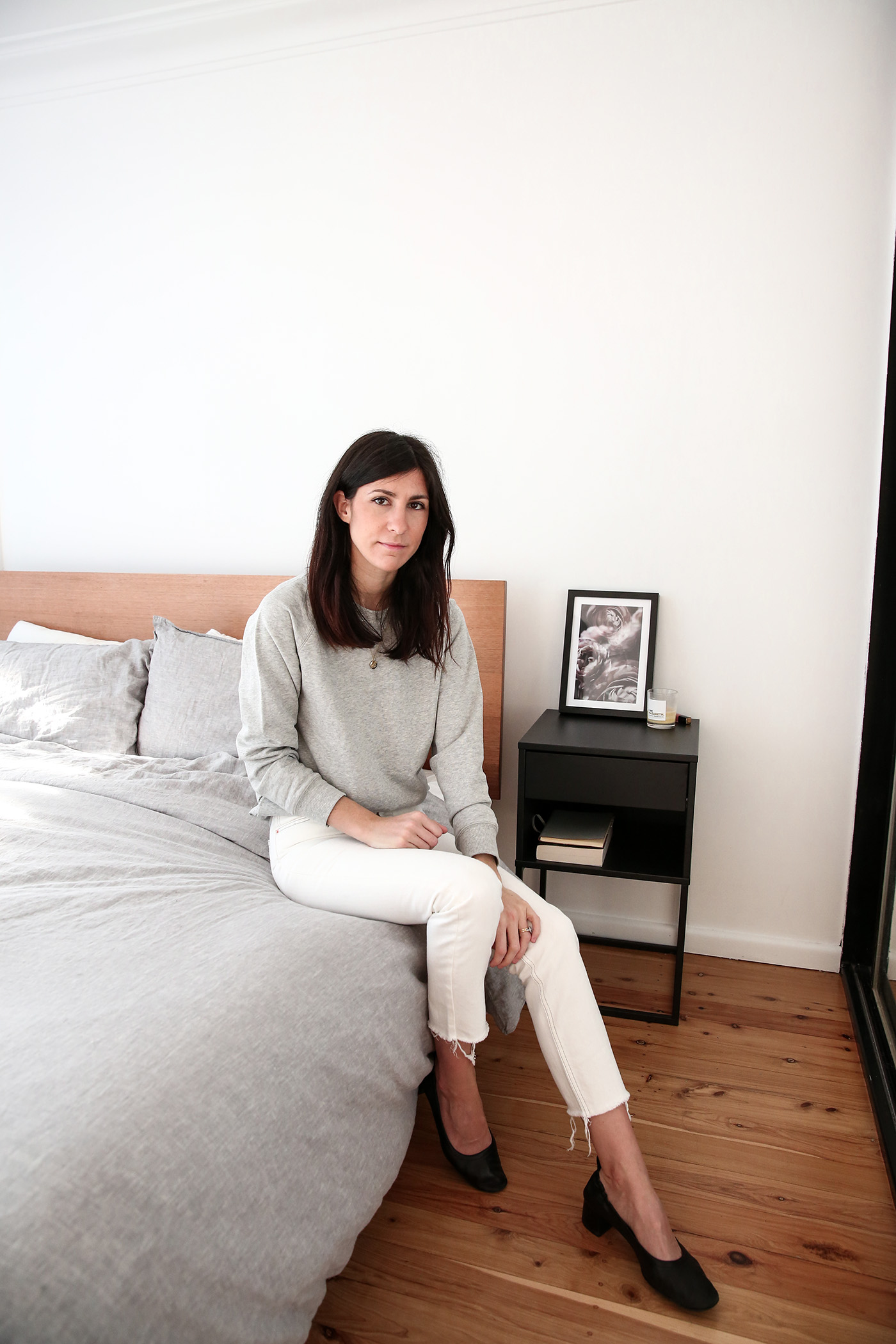
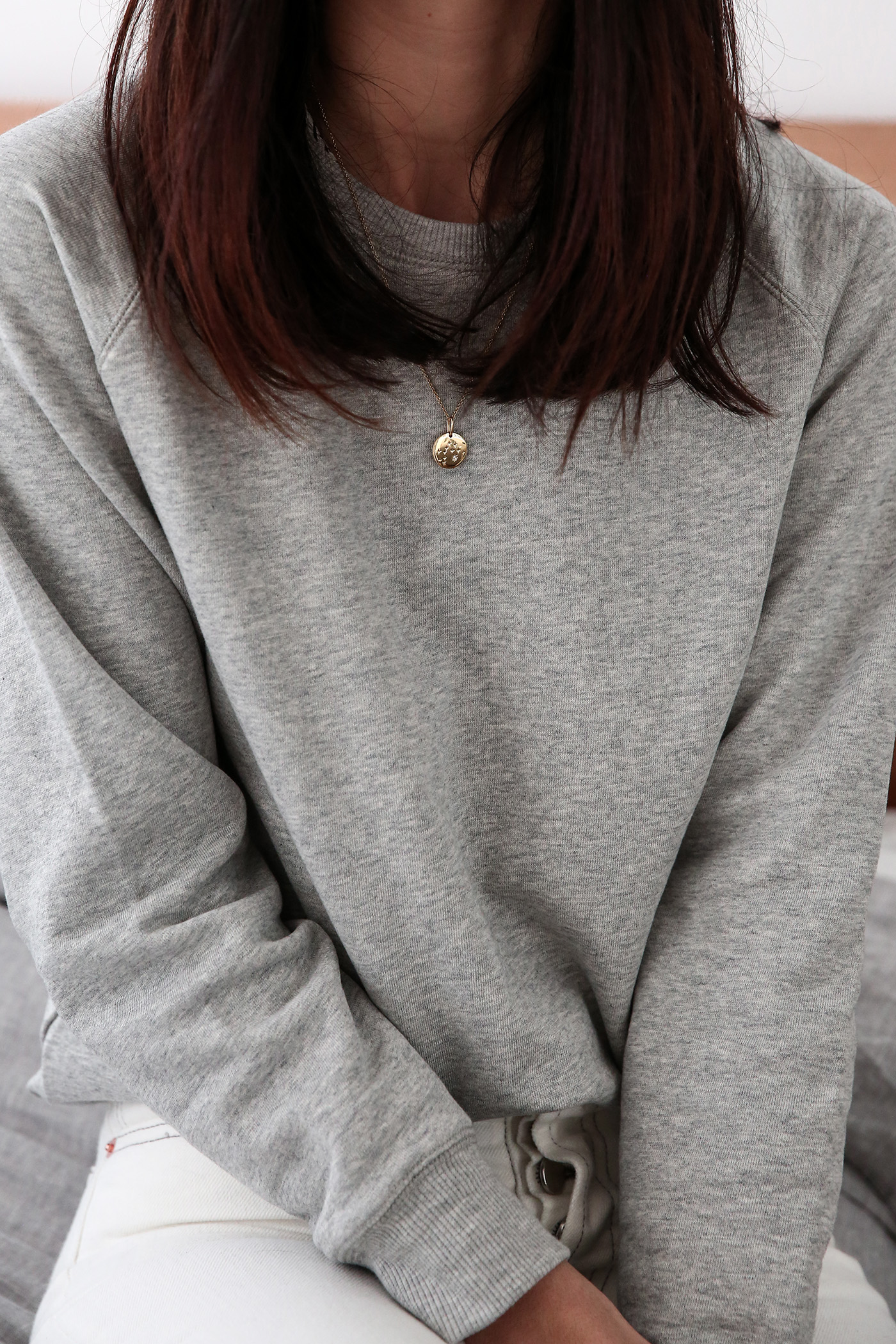

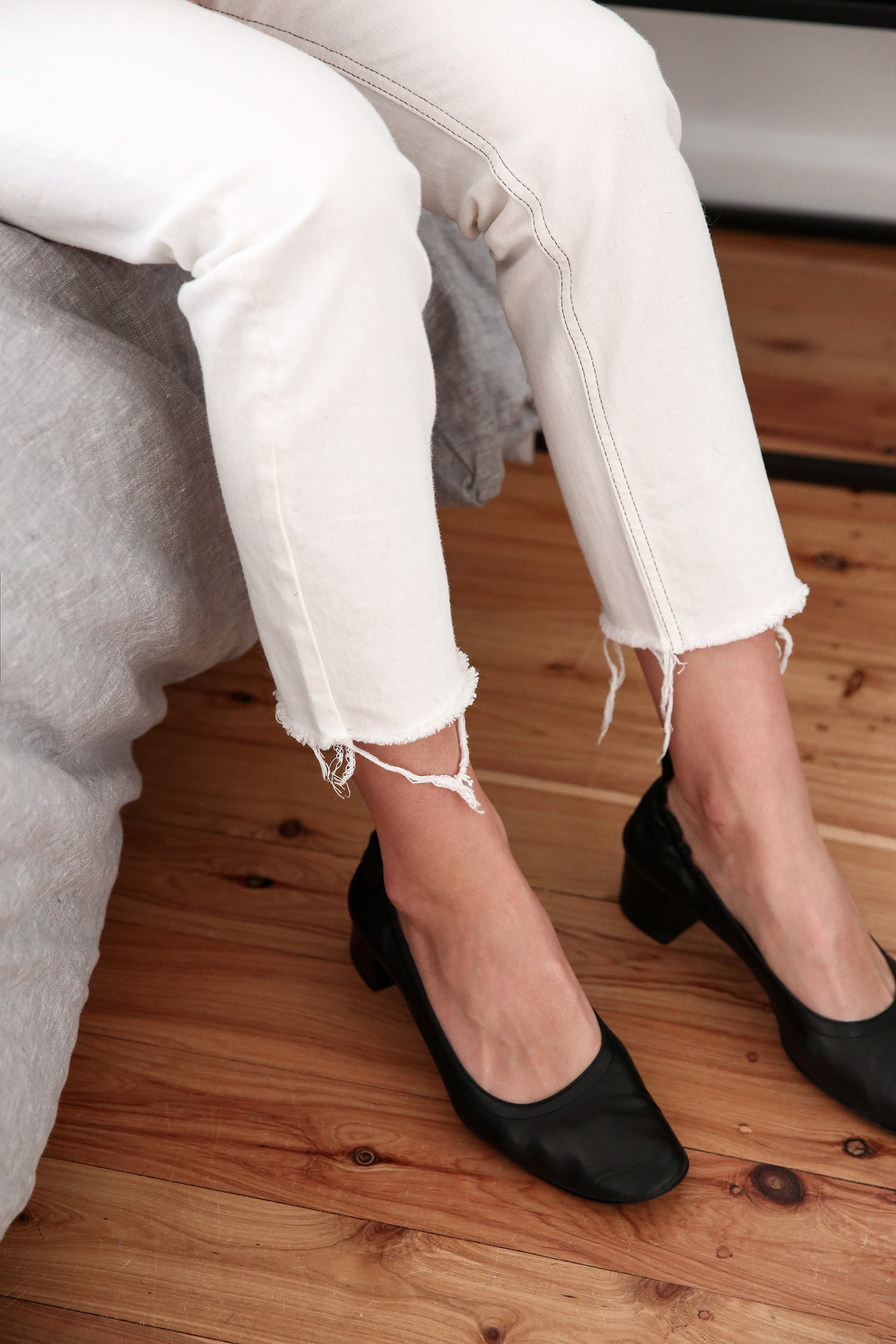
Over the last few years, you’ve probably noticed a bit of a change in terms of the types of brands I gravitate towards. I’ve put a spotlight on fashion labels that are making a commitment to reducing their impact on the environment, and produce their garments ethically. Essentially, my preferences have shifted from fast fashion to sustainable fashion. I’ve also tried to make my own efforts to do more with less, and ‘consume’ fewer but higher quality items. And while I’m not perfect in that respect, I’ve been talking a lot more about shopping with intent, something I’d like to go into more detail at a later time.
Wearing c/o Tradlands sweater, ASOS raw hem jeans, Everlane day heels, Mejuri necklace, Pandora rings and bracelet
And the reason is three-fold. Despite the fact that I love fashion, and the process of experimenting with clothing, some of my biggest concerns tend to be social issues, and in particular, how we treat the planet that we’re inhabiting. I’m not immune to consumer marketing, and I’ll admit that I do get drawn in by what I see on social media. Plus, as someone who shares styling advice and their outfits online, making those efforts to cut back and shop as ethically and sustainably as possible may seem at odds with that.
But I think we can make better choices. Sure, I love the process of window shopping or browsing my local department store, but if I’m taking something to the till, I want to be thinking more consciously about what it is that I’ve decided to add to my wardrobe, and I’m hoping that this is something that will come through (even if I still share the odd ‘haul’ on my YouTube channel).
There are three main pillars that I’ve been focusing a lot on as of late: sustainable fashion, ethical fashion, and the reduction of synthetic textiles in my wardrobe. Traditionally, there’s been a huge lack of transparency in the fashion industry about where our clothes come from, how they’re made, and how the fabrics are produced, something we should all be trying to pay a bit more attention to. So, being able to tick at least one of those boxes is a good first step, even better if the brand or item of clothing manages to sit across all three pillars.
What is Sustainable Fashion?
So.. what is sustainable fashion? Essentially, it’s garments that have been produced using organic fibres, that have been treated with fewer chemicals and pesticides than traditional large-scale (and often fast fashion) manufactoruing processes. By using less chemicals and pesticides, the production causes less environmental harm.
I recently learned that the fashion industry is the second biggest polluter in the world – behind oil – much of which is driven by our consumer society. To put things into a little bit of perspective, three years worth of drinking water are required to produce the cotton needed for your favourite basic tee, not to mention that these cotton crops are typically treated with very heavy pesticides. It’s this first step of the supply chain that has a huge impact on our environment, and is a big contributor to watter pollution, due to the treatment and drying of textiles using harsh chemicals. One of my biggest concerns, next to social issues, is the damage that we’re causing to the environment, which is why sustainable fashion has become a more and more important subject for me over the years.
Sustainable fashion is green; aside from the commitment to reducing the environmental impact, it also places an emphasis on creating high quality, durable clothing that are long-lasting, and less trend focused.
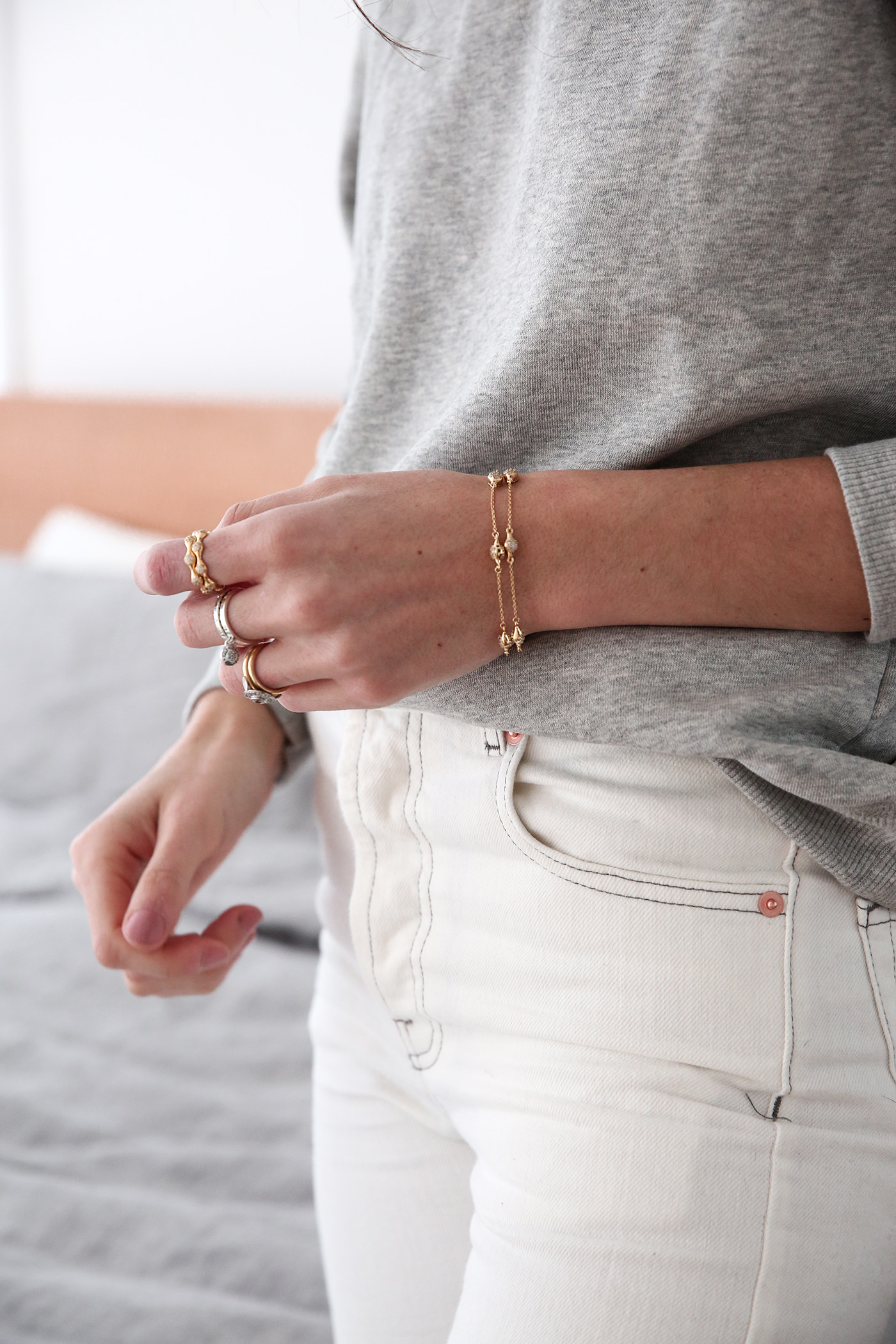
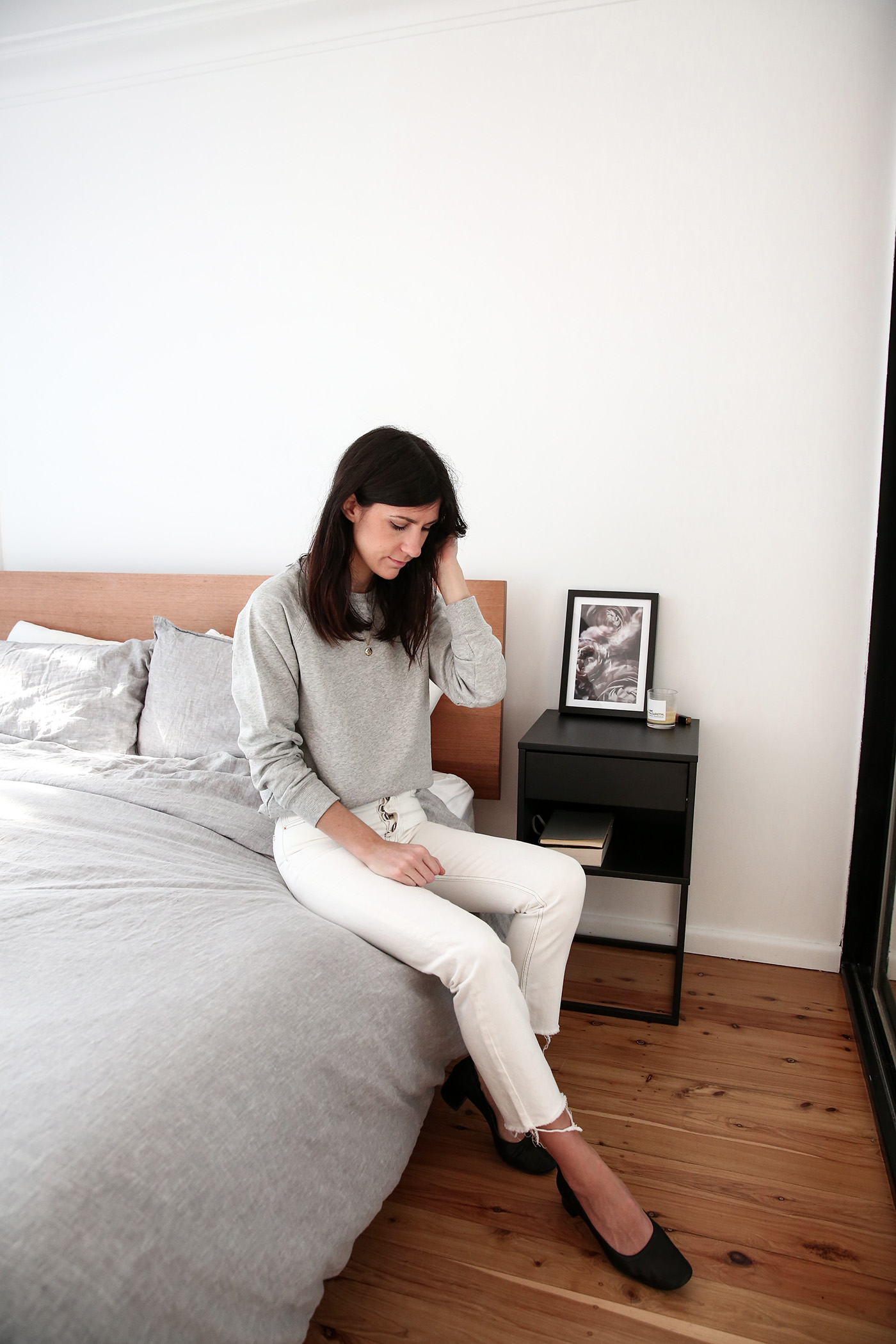
Ethically Produced Clothing
When I think about clothing that is produced ethically, I’m thinking about the social cost of sewing an item. Are workers being treated fairly, with reasonable working hours and a living wage (at the very minimum)? This is clothing that is made responsibly.
And, it’s worth noting that depending on your personal point of view, the definitely of ethically produced clothing may vary slightly. This could be broadened to include items which are vegan, and don’t use materials such as leather or silk (i.e. cruelty-free).
Fewer Synthetic Textiles
Plastic-free July was eye-opening for me. I learned that while plastic may bio-degrade, it never truly goes away. It breaks down into smaller and smaller particles, which are being consumed by aquatic life, and other animals which rely on the Earth’s oceans for sustenance.
And it’s not just the plastic that houses the food that we’re consuming, or wraps the products that we reach for on a daily basis, but it’s the plastics in our clothing too. Laundering synthetic textiles releases small plastic fibres – or micro fibres – into our waterways, which are being ingested at the very bottom of the food chain, by plankton. And this only goes up, finding their way into the stomachs of fish, and inevitably, into our own stomachs. Aside from what this is probably doing to our bodies, there’s also the very sad fact that this creates a false sense of satiety in these creatures, which can be and is life-threatening. You only have to take a look at the impact of marine plastics pollution on the shearwater birds, which inhabit Lord Howe Island, to see how harmful our plastic problem can be.
Then there’s the less visible impact on the environment through the production process of synthetic textiles which emits harmful gases into the atmosphere.
It’s part of the reason why I think it’s so important to choose natural textiles over synthetics, and if possible, use a specialty wash bag (like this one), to launder any polyester items you have in your wardrobe.
So what next?
One of the biggest ‘a-‘ha’ moments for me happened after I read ‘To Die For: Is Fashion Wearing Out the World’ by Lucy Siegle, and it was really what spurred me on this path to consuming more sustainable fashion, and ethically-produced clothing. It was on the eve of an international trip Luke and I had planned through Europe, and I was so impassioned by what she had revealed in her book, much of while I think is still quite relevant today. Prior to that, I probably wouldn’t have thought twice about dropping into Primark to ‘haul’ a bunch of things that I probably didn’t need. I’d already begun making a shift towards more contemporary designers – the idea of quality over quantity – but I didn’t really think twice about buying polyester; I wasn’t aware that this was another area that should be of concern to me.
Perhaps one of the moments that really stood out to me at that time, was attending a wedding, where one of the guests so proudly exclaimed that she was wearing a 3GBP dress from Primark. While I understand the allure of undercovering a bargain, and I’m quite conscious that everyone’s financial situation is different, I couldn’t help but wonder: what about the social cost of producing that garment?
One of the brands I’ve been pretty excited to feature is Tradlands; their mission is to produce carefully executed garments which are slowly developed from initial concept and design, to the final product. And, they are strongly committed to ensuring that their manufacturing processes are not only sustainable, but also ethical. Their workers are paid a living wage, they try to source materials that were produced in an ecologically responsible way, they have a recycling program for offcuts (which comprises just 2% of materials), and they donate to local women’s shelters and Dress For Success – two very worthy causes.
If you take a look at the nuts and bolts of my outfit above, you’ll see that I’m wearing an ethically and sustainably made sweatshirt, 100% natural fibre jeans, and shoes that have been ethically made (from a social standpoint). On the whole, there may be a lack of transparency across the fashion industry, but we can make conscious choices to choose items when we do shop, that align with our values.
One thing I’ve always been a big supporter of, is buying pre-loved. It’s only been in the last few years that The Real Real landed on my radar, and prior to that, I used to do a lot of my shopping on eBay. Not only does pre-loved reduce waste, as we’re reusing (and effectively reducing and recycling), but on the whole, it’s also a lot less expensive than buying new, which means it’s a great way to add a higher quality piece to your wardrobe at a price that sits within your budget.
I’m painfully aware that as someone who does share her outfits and regular styling online, and who also is partial to adding the odd new thing to her wardrobe, that this may sometimes seem at odds with my actions. I’m not perfect, and I’ve never claimed to be, and I think being aware and doing what you can – no matter how little – is better than doing nothing at all. It’s the reason why I often choose contemporary labels over high street ones, why I’m so keen to support local designers, and why I’ve chosen to seek out brands which align with those values that are a huge contributor to change.
And on the occasions where I do head to the high street, I find myself focusing on that fabric content more and more, and opting to choose items that are made out of cotton, linen or silk over man-made and chemically produced textiles.
While you can’t always correlate higher prices with better quality, sustainably and ethically produced clothing made from natural fibres generally will have a slightly higher price point. The point is, to buy fewer, better quality clothes, than more, poorly made ones. It’s easy to be conditioned into thinking that buying new clothing each week is ‘normal’; but given that we tend to wear 20% of our wardrobe 80% of the time, saying ‘no’ to that cute new pair of shoes (my ultimate weakness), isn’t going to be the end of the world.
So there you have it, the three core pillars that have been guiding my choices of late: sustainable fashion, good ethical standards, and natural fibres. It doesn’t take much to make a positive difference, and just changing your tune, whether it’s making the decision to shop with intent, or to prioritise shopping from brands that honour high eco-friendly standards, it’s a step in the right direction.


Thanks for a great post, Mademoiselle. You’ve explained a vital but often complex subject in a very clear, easy to understand way, Lx
Love this post, Jamie! I’m a minimalist and I support all of your points here. It’d be awesome if you share with us brands that you love and know of, that produce clothes ethically / sustainably / with natural material.
Hi,
Thanks for this blog post. I’ve also recently started to do some research in the sustainability area. Through you, I started to explore transparent brands who are advocates of the ‘quality over quantity’ mindset. My wardrobe is slowly transforming into a collection of clothes that I love wearing and am proud to have knowing that what I own is sustainable and ethically made.
I’d like to hear your view on smaller brands selling their products (jewellery, leather handbags, or linen dresses) on Etsy for instance. Do you ever consider these shops? I’d love to support local makers, but I want to make sure that I receive a high-quality product for the higher price and the said ethos is followed through in the making.
Thanks for the reply!